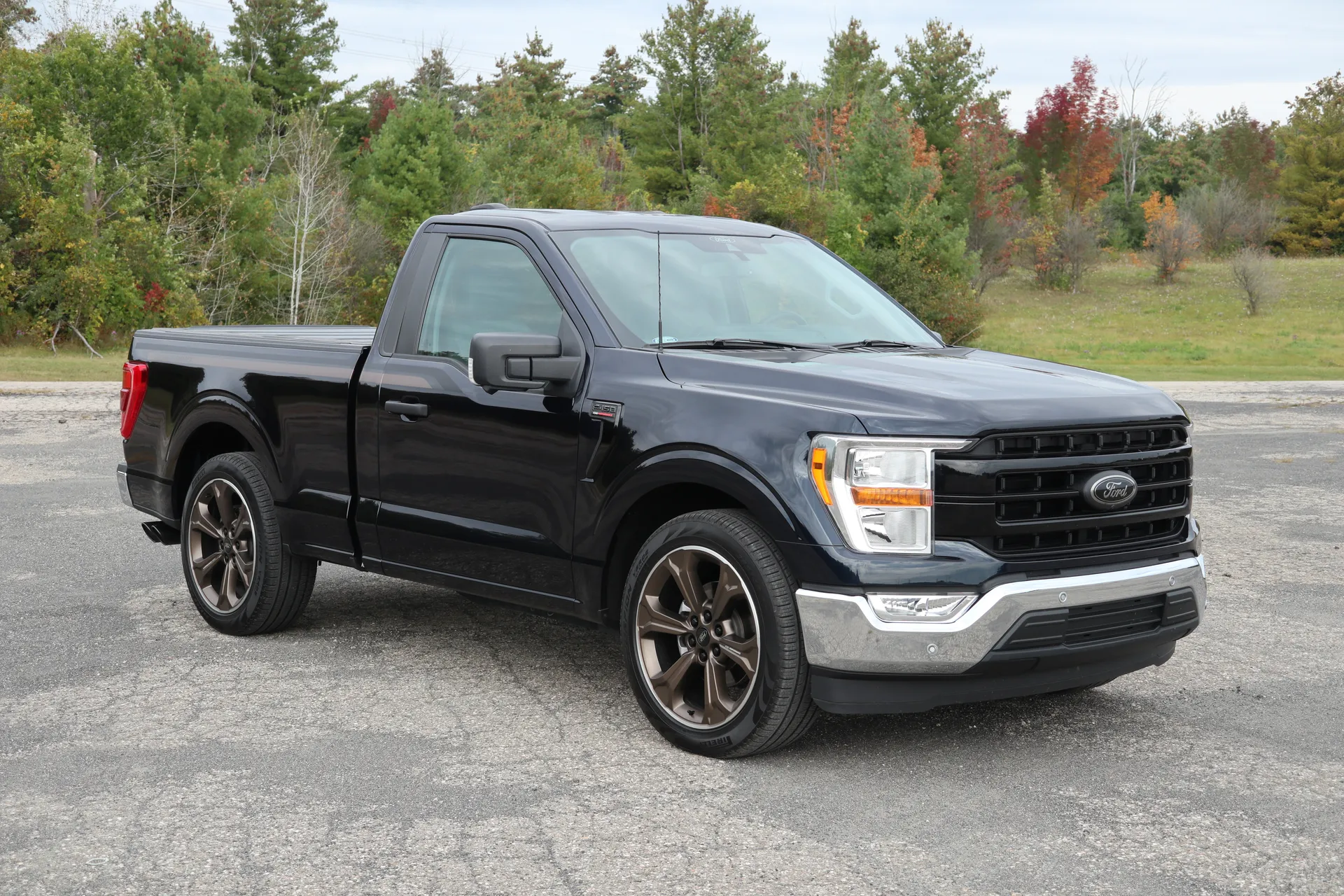When shopping for a new truck, one of the most critical factors for many buyers is towing capacity. Whether you’re hauling a trailer for work, a camper for weekend adventures, or equipment for a job site, your truck’s ability to pull its weight—literally—can make or break its value.
While high-end trims often boast the most robust engines and advanced towing features, not everyone wants or needs the bells and whistles that come with those hefty price tags. In fact, base model trucks have become increasingly capable in recent years, with some offering impressive towing performance right off the dealership lot.
However, not all entry-level trucks are created equal. Some manufacturers prioritize power and utility even in their most affordable trims, delivering strong engines and solid towing packages. Others, unfortunately, skimp on the performance in their base models, offering trucks that look the part but fall short when it comes time to get the job done.
For budget-conscious buyers or those looking to get the most bang for their buck, knowing which base models can tow confidently—and which ones can’t—is essential.
This article takes a closer look at ten base model trucks: five that deliver serious towing power and five that simply don’t measure up. Whether you’re eyeing a new workhorse or trying to avoid a disappointing purchase, this guide will help you navigate the crowded truck market with clarity and confidence.
Also Read: Top 5 Cars With Headlights That Fog Up Frequently
5 Base Model Trucks With Towing Power
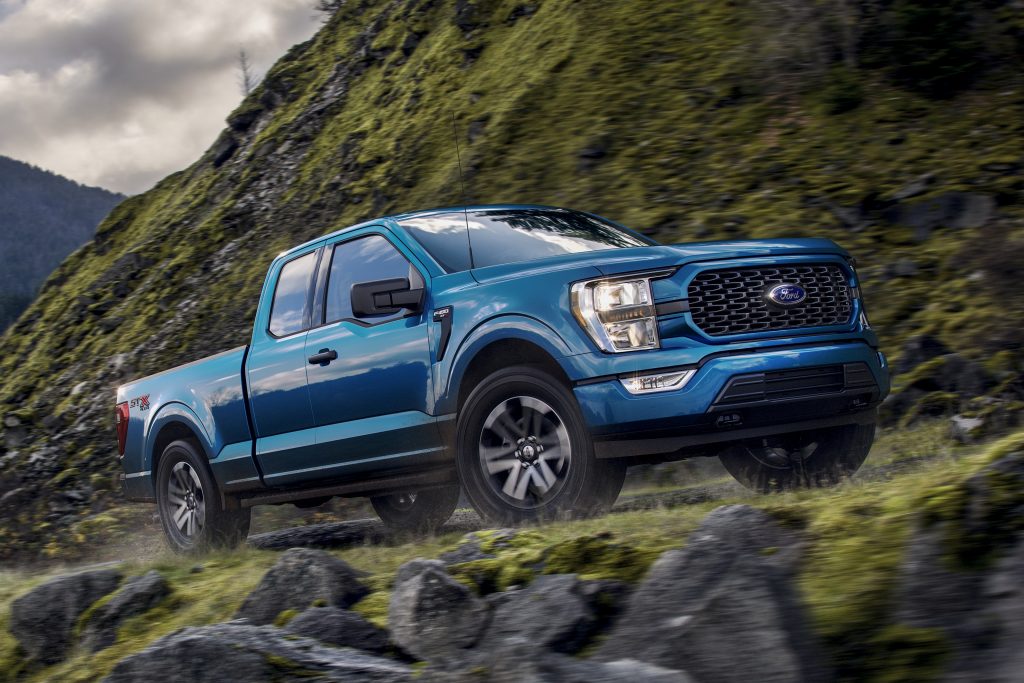
1. Ford F-150 XL
The Ford F-150 XL is a powerhouse that defies the typical expectations of what a base-model truck can deliver. As part of the legendary F-Series lineup, this truck is designed to offer durability, practicality, and sheer strength from the moment it rolls off the factory line. The base 3.3L V6 engine in the XL trim produces 290 horsepower and 265 lb-ft of torque, which is more than enough to handle a towing capacity of 8,200 lbs when properly configured.
This towing capacity is impressive for an entry-level truck, especially when compared to competitors in the same price range. It proves that Ford didn’t skimp on the foundational components of the F-150, even for those who opt for the most affordable version.
What makes the F-150 XL stand out is that it doesn’t just rely on its engine output to get the job done. Ford’s decision to equip this base trim with the same rugged, high-strength steel frame that’s used across its entire F-150 range ensures that the XL is structurally sound and capable of handling the rigors of towing.
The XL trim is essentially the backbone of the F-150 lineup, and the engineers at Ford didn’t cut corners with its chassis or suspension setup. The truck comes equipped with a six-speed automatic transmission that manages power delivery to the wheels efficiently, ensuring smooth acceleration while pulling a load, whether it’s a boat, trailer, or camper.
Additionally, the Ford F-150 XL is designed with practical towing features that help drivers make the most of its capabilities. For instance, even in its base form, the truck offers trailer sway control, which helps keep your trailer stable by automatically applying the brakes if it detects any erratic movements. It also includes hill-start assist, which ensures that the truck doesn’t roll back when starting on an incline with a heavy load attached.
Even though this is the most basic trim in the F-150 lineup, these thoughtful features make it feel much more like a truck that’s ready to take on serious tasks without a second thought. Whether you’re hauling heavy construction materials for a job site or pulling a camper for a weekend getaway, the F-150 XL’s towing capabilities are hard to beat for a base model.
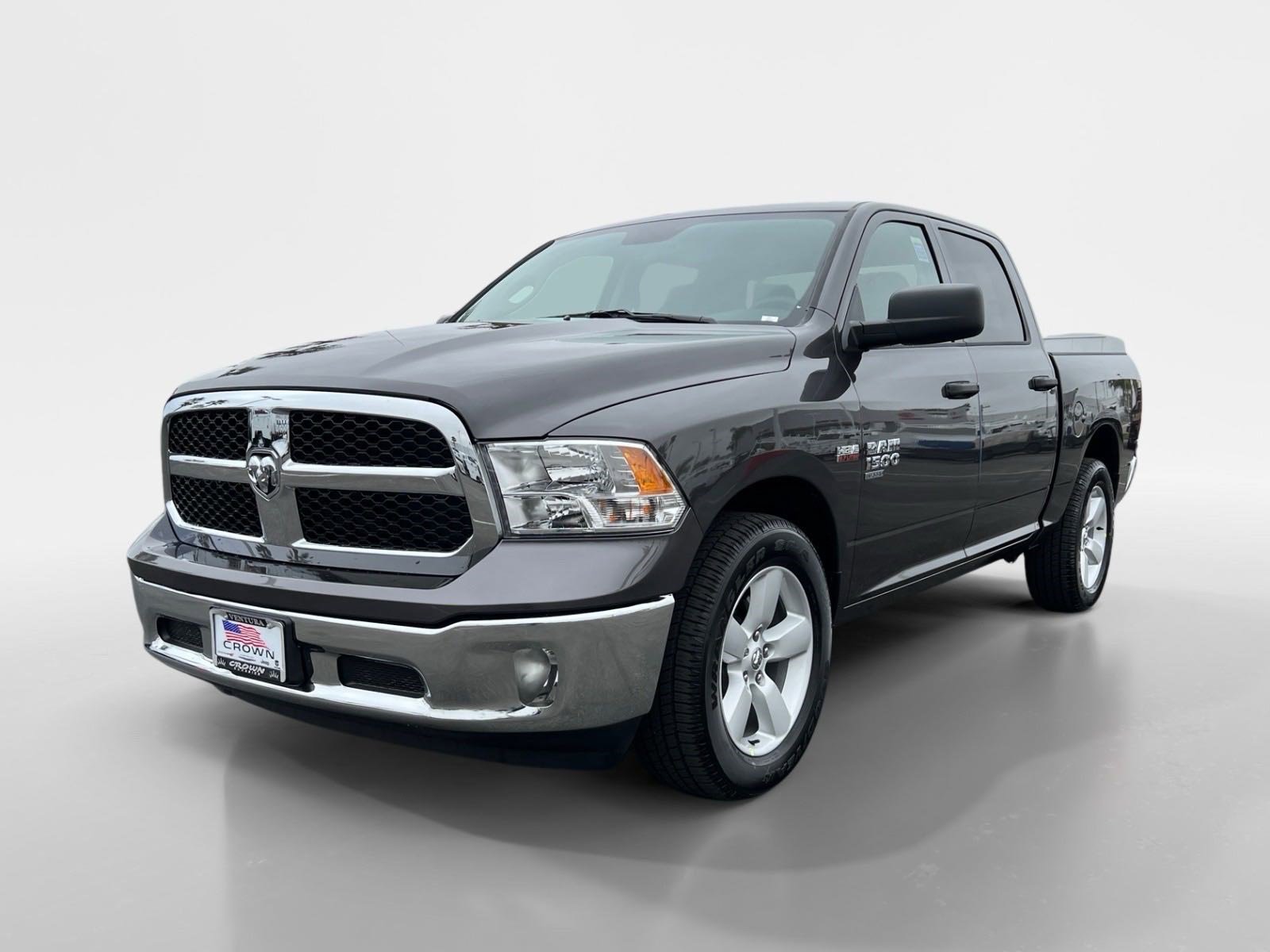
2. Ram 1500 Tradesman
The Ram 1500 Tradesman is one of the most practical and durable base models available in the truck market, especially when it comes to towing power. With its 3.6L Pentastar V6 engine that incorporates eTorque mild-hybrid technology, the Tradesman churns out 305 horsepower and 269 lb-ft of torque—numbers that put it right in the sweet spot for towing capacity. In its most basic configuration, this truck can tow up to 7,730 lbs, which is exceptional for a base model that’s meant to provide raw utility.
Unlike many trucks that might need significant upgrades to perform well in towing situations, the Tradesman offers robust capabilities right from the start. This towing capacity easily surpasses many of its competitors in the base model category and proves that Ram didn’t sacrifice strength for affordability.
The key to the Tradesman’s success lies not only in its powerful engine but in its smart engineering. Ram’s decision to use a coil-spring rear suspension instead of the traditional leaf springs, which are often found in base model trucks, gives the Tradesman a smoother, more controlled towing experience. This suspension setup provides superior ride quality and trailer stability, making the truck more comfortable and safer to drive when hauling heavy loads.
Additionally, the truck’s frame is built with high-strength steel to support large payloads, allowing it to handle demanding tasks with ease. The Tradesman, though considered an entry-level model, doesn’t feel like one. Its ability to handle large loads and its robust build make it a highly capable workhorse right out of the gate.
Moreover, the Tradesman comes with a variety of towing-friendly features that are designed to simplify the process of hauling. It offers integrated trailer brake control and a class III hitch receiver, making it ready to tow without the need for extensive upgrades.
Ram also includes trailer sway control and hill-start assist, which provide extra peace of mind when driving with a trailer. These features allow drivers to focus more on the road and less on managing the complexities of towing. The Ram 1500 Tradesman is a truck that offers exceptional towing capability, comfort, and durability—all without breaking the bank.
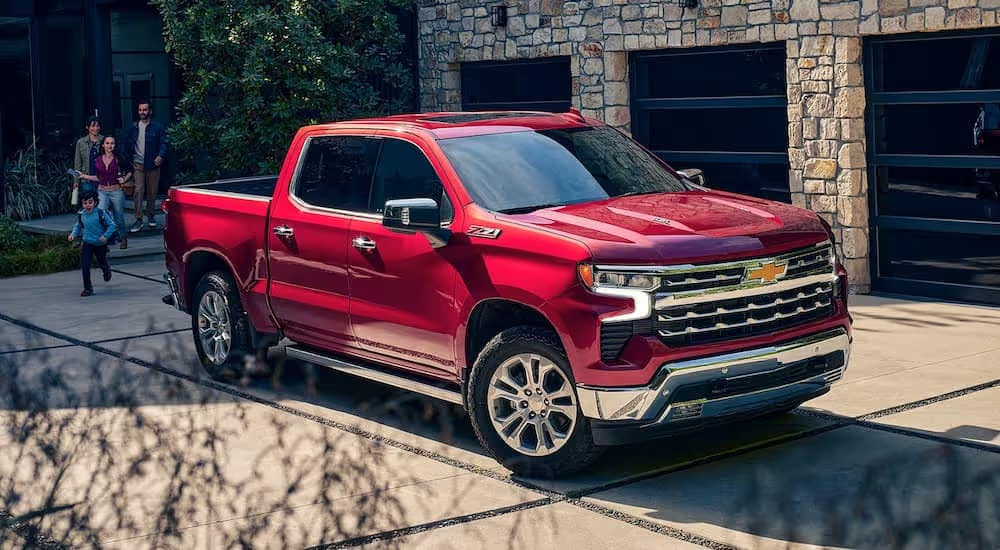
3. Chevrolet Silverado 1500 WT
The Chevrolet Silverado 1500 Work Truck (WT) is another base model that offers serious towing power, proving that you don’t need to spend a fortune to get a truck that can work hard and tow even harder. Powered by a turbocharged 2.7L inline-4 engine that delivers 310 horsepower and 430 lb-ft of torque, the Silverado 1500 WT is a surprise contender in the world of base-model towing.
With a maximum towing capacity of 9,500 lbs, this truck stands out for its impressive towing strength, especially considering its more affordable price point. When compared to other base models in the segment, the Silverado WT offers a robust combination of power and utility, making it ideal for those who need a workhorse that won’t break the bank.
What sets the Silverado WT apart is the sheer torque offered by the 2.7L turbo engine. With 430 lb-ft of torque, this engine provides ample low-end power, which is essential when towing large or heavy trailers. Unlike naturally aspirated engines that might struggle on inclines or while starting with a heavy load, the turbocharged four-cylinder has the muscle needed to make pulling trailers a seamless experience.
Additionally, the Silverado’s eight-speed automatic transmission ensures that power is delivered smoothly to the wheels, optimizing both fuel efficiency and performance when towing. It’s a setup that ensures drivers get the best of both worlds: high towing capacity and everyday drivability.
Chevrolet has also done an excellent job of integrating smart towing features into the base WT trim. Even without the fancy options and tech found in higher trims, the Silverado 1500 WT comes standard with tow/haul mode, which adjusts the truck’s transmission for better load handling, and trailer sway control, which helps keep your trailer stable on the road.
The truck’s integrated brake controller allows for precise management of your trailer brakes, which is essential when towing larger loads. Although the Silverado WT may not have the bells and whistles of more premium trims, it certainly doesn’t skimp on functionality where it matters most. Its strong engine, solid towing features, and work-ready design make it a standout choice for those seeking a reliable and affordable truck.

4. Toyota Tundra SR
Toyota made a bold decision when it redesigned the Tundra, and the base SR trim doesn’t just offer basic performance—it provides the strength needed to tow heavy loads with ease. Unlike many competitors that reserve their most powerful engines for higher trims, the base SR trim of the Toyota Tundra comes equipped with the same 3.5L twin-turbocharged V6 found in the rest of the lineup.
This engine generates 348 horsepower and 405 lb-ft of torque, which provides the Tundra SR with a maximum towing capacity of 8,300 lbs. This is a huge upgrade from previous base trims, where the V8 engine offered significantly less towing capacity.
One of the standout features of the Tundra SR is its fully boxed steel frame, which gives it the structural integrity needed to handle large towing loads. The rugged chassis ensures that the truck is up to the task of carrying heavy payloads or pulling a loaded trailer without compromising performance.
Toyota also integrates a 10-speed automatic transmission that optimizes power delivery for smooth acceleration and enhanced efficiency. This transmission works in tandem with the engine to ensure that the truck has enough power to manage steep grades, inclines, and rough terrain, making it an excellent option for those who need a reliable towing partner for work or recreation.
Another factor that makes the Tundra SR an excellent base-model choice for towing is Toyota’s inclusion of several essential towing features. Even in its most basic trim, the Tundra comes with integrated trailer brake control, tow/haul mode, and trailer sway control. These features are vital when pulling heavy loads, as they help keep the trailer stable and make towing on highways or winding roads much safer.
The truck also comes with a backup camera and parking sensors, which make hitching up a trailer much easier and more precise. All of these features combined make the Tundra SR a solid choice for anyone looking for an affordable truck with serious towing capabilities straight from the factory.
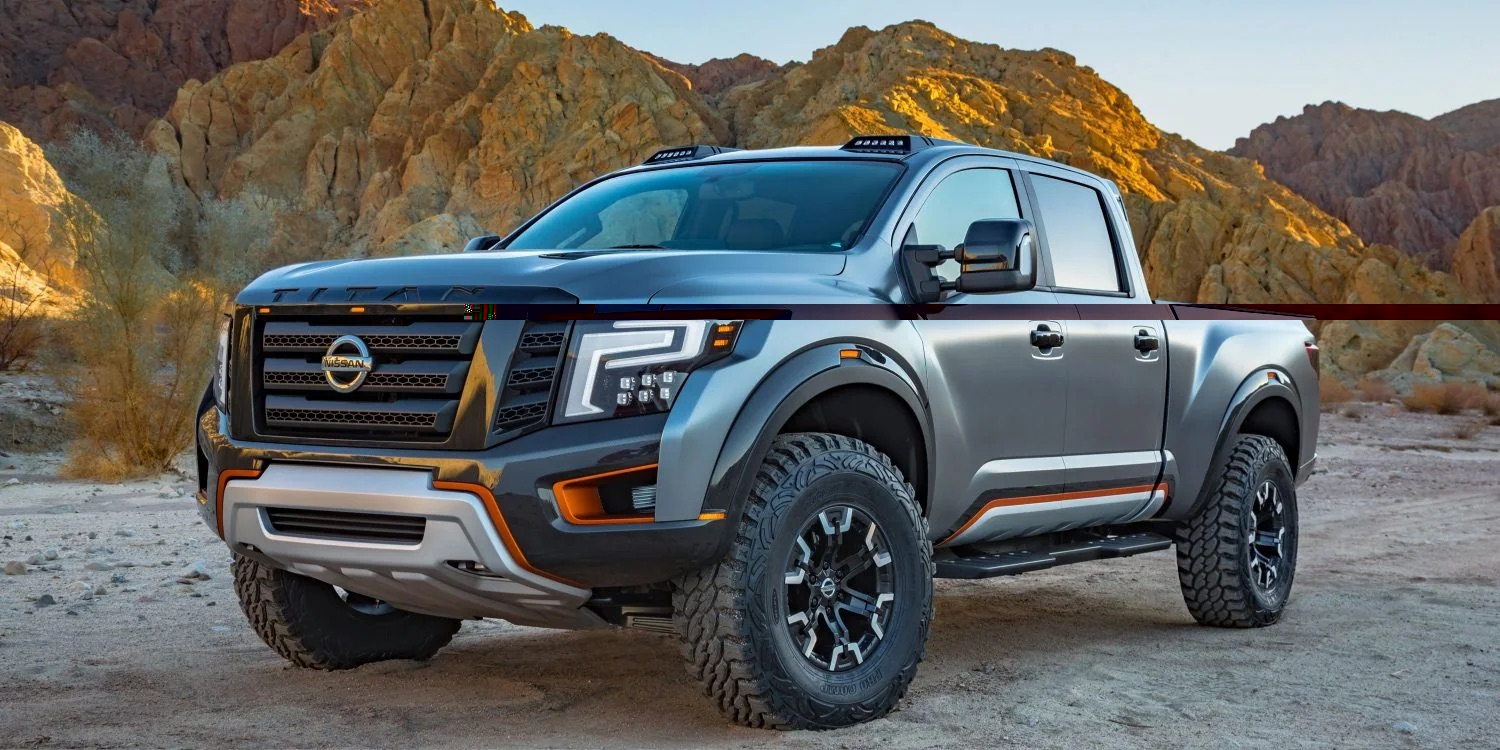
5. Nissan Titan S – Simple but Strong
The Nissan Titan S proves that even the base trim of a full-size truck can handle serious towing duties without requiring a lot of upgrades or enhancements. Powered by the 5.6L V8 engine, the Titan S generates 400 horsepower and 413 lb-ft of torque, which provides a maximum towing capacity of 9,310 lbs.
This places the Titan S squarely among the top contenders in the full-size truck segment, even in its base configuration. The V8 engine is well-regarded for its towing performance, providing ample low-end torque to pull heavy trailers with ease, whether for work or play.
The Titan S also benefits from its solid ladder-frame construction, which is designed to support heavy payloads and handle the stress of towing large trailers. Coupled with the truck’s seven-speed automatic transmission, the V8 engine delivers power efficiently, ensuring smooth towing even on hilly or uneven terrain.
Unlike some trucks that might struggle to maintain performance under load, the Titan S feels confident and controlled when hauling a heavy trailer, thanks to its strong drivetrain and well-tuned suspension.
In addition to its impressive raw towing power, the Titan S comes with several standard towing features that enhance its practicality. Trailer sway control and hill-start assist come standard on this base model, ensuring that drivers have the support they need when hauling large loads.
The integrated trailer brake controller also provides a more precise and controlled braking experience when towing. The Nissan Titan S is a reliable, no-nonsense truck that offers great towing capacity and features, all at a competitive price point.
5 Base Model Trucks That Fall Short on Towing
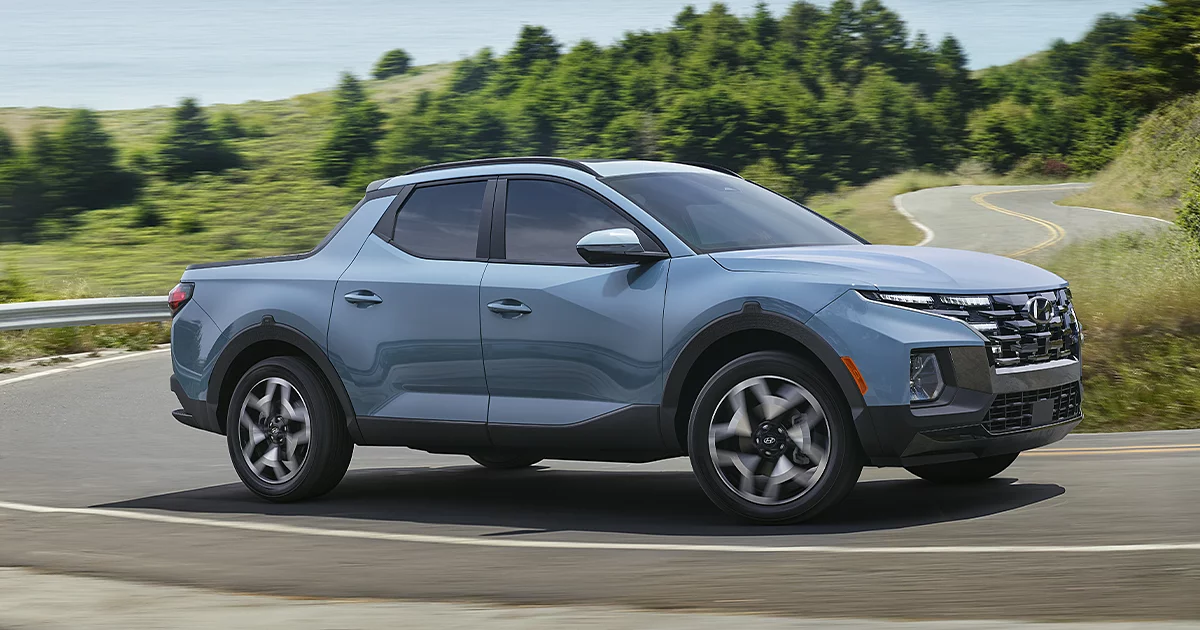
1. Hyundai Santa Cruz SE
The Hyundai Santa Cruz SE is a unique hybrid that blends the functionality of a pickup with the comfort of a crossover. But when it comes to towing, the base model SE falls short of expectations for those looking for serious hauling power.
Powered by a 2.5L 4-cylinder engine that produces 191 horsepower and 181 lb-ft of torque, the Santa Cruz SE’s towing capacity is limited to a mere 3,500 lbs. While this is adequate for light-duty tasks such as pulling a small boat or a trailer full of recreational gear, it’s far from enough to handle heavier loads like larger campers, construction materials, or livestock trailers.
In comparison, most base models from traditional mid-size trucks offer a higher towing capacity, making the Santa Cruz less appealing for those who need to tow more than the basics.
Santa Cruz’s towing limitations stem from more than just its engine size. Hyundai’s decision to base the Santa Cruz on the unibody platform of the Hyundai Tucson SUV rather than a traditional body-on-frame truck design contributes significantly to its towing deficiency.
Unibody vehicles generally lack the rigidity and strength required to handle heavy towing loads. This results in a softer frame and suspension setup, which is ideal for passenger comfort but compromises the Santa Cruz’s ability to bear the stress and weight of heavy trailers or equipment. The SUV-style foundation might be perfect for urban driving and weekend camping trips, but for work trucks that need to haul larger, more demanding loads, it simply doesn’t cut it.
Moreover, the Santa Cruz is only offered with front-wheel drive (FWD) in its base SE trim, with all-wheel drive (AWD) being available as an upgrade. While AWD can improve traction on slippery or uneven surfaces, it does little to enhance the Santa Cruz’s raw towing power.
When combined with the lack of robust suspension systems or additional towing-oriented features, the FWD setup limits the truck’s capability when hauling heavier loads. So, while the Hyundai Santa Cruz SE is a great urban utility vehicle for those who don’t need to tow frequently or heavily, its towing abilities are limited, making it unsuitable for more serious, large-scale hauling.
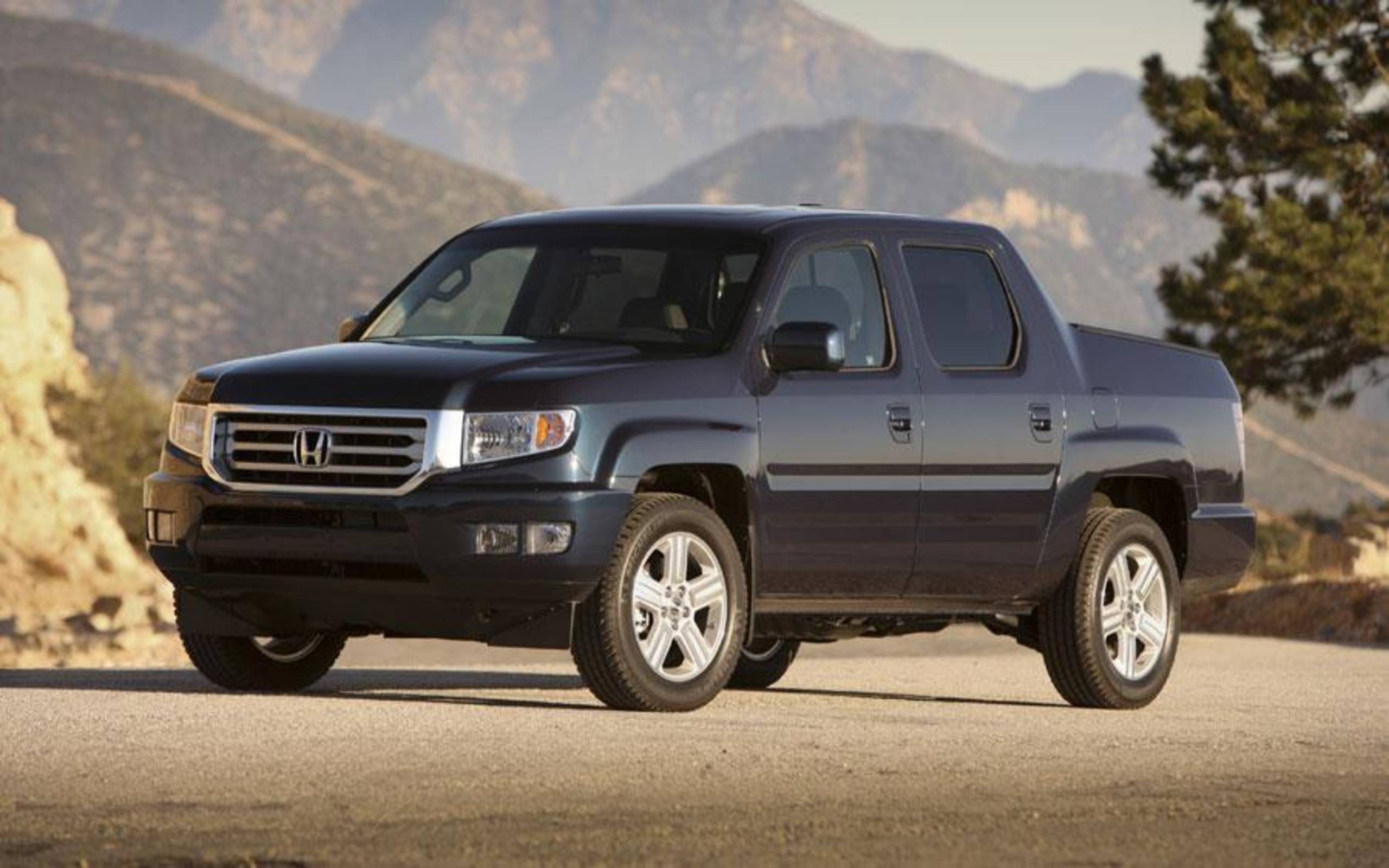
2. Honda Ridgeline Sport
The Honda Ridgeline Sport has garnered praise over the years for its comfort, innovative design, and car-like driving experience. However, when it comes to towing, particularly in the base Sport trim, it leaves much to be desired. The 3.5L V6 engine, which produces 280 horsepower and 262 lb-ft of torque, is certainly capable of handling everyday driving tasks.
Still, the Ridgeline’s maximum towing capacity in its base Sport trim is capped at 5,000 lbs—a figure that falls short compared to many of its competitors in the midsize truck category. While this towing capacity might seem sufficient for lightweight tasks such as hauling a small boat or utility trailer, it struggles with larger and heavier loads that other trucks in the same class can easily handle.
One of the reasons the Ridgeline’s towing capacity is so limited is due to its unibody construction. Unlike traditional trucks built with a ladder frame, which provides the strength and durability needed for serious towing, the Ridgeline uses a unibody design shared with Honda’s SUVs.
This frame design sacrifices towing capacity for superior ride quality and handling, making the Ridgeline a better option for those who prioritize comfort and a smooth drive over the ruggedness and utility that traditional trucks offer.
Though the Ridgeline has an innovative in-bed trunk structure of the truck simply isn’t built to handle the heavy-duty demands that some truck buyers expect, which can be a helpful feature for smaller loads, but the structure of the truck simply isn’t built to handle the heavy-duty demands that some truck buyers expect.
Additionally, the Ridgeline’s 4WD system—standard in the Sport trim—does provide improved traction for off-road capabilities, but it doesn’t compensate for the vehicle’s inherent limitations in towing. The truck’s softer suspension system, built to smooth out the ride for everyday driving, further dampens its ability to haul larger loads efficiently.
While the Ridgeline excels as a comfortable, family-friendly vehicle for those who rarely need to tow heavy items, it falls short for buyers seeking a more robust work truck that can handle the demands of pulling heavier trailers or equipment.

3. Ford Maverick XL
The Ford Maverick XL, while being one of the most affordable trucks on the market, is also one of the smallest and least capable when it comes to towing. The base hybrid version of the Maverick comes equipped with a 2.5L 4-cylinder engine paired with an electric motor, generating a combined 191 horsepower.
While the Maverick’s hybrid engine offers excellent fuel efficiency and is well-suited for light, everyday use, its towing capacity is a mere 2,000 lbs—the lowest in the compact truck segment. For comparison, many compact and midsize trucks offer towing capacities starting at 3,500 lbs or more, making the Maverick an underwhelming option for those who need a truck for heavy-duty tasks.
The small towing capacity isn’t surprising when you look at the Maverick’s design. As a unibody vehicle, like the Santa Cruz, the Maverick isn’t built for heavy-duty hauling. The hybrid powertrain is tuned for efficiency rather than torque, meaning the truck is better suited to lighter recreational activities like pulling a small trailer or carrying gardening equipment.
For those who need to haul an RV, a large boat, or construction equipment, the base hybrid Maverick falls short. The front-wheel-drive configuration on the base model further exacerbates the issue by limiting traction and stability when towing heavy loads, particularly on inclines or in wet conditions.
Although the Maverick is ideal for city driving and short trips, its base configuration is simply not made for serious towing. Ford offers a more powerful EcoBoost engine with a Tow Package on higher trims, which boosts the towing capacity to 4,000 lbs, but for anyone looking to keep costs low with the base model, the Maverick’s towing capacity is inadequate.
While it’s great for light-duty use, the Maverick XL falls short when it comes to more demanding hauling, proving that small size and low cost often come at the expense of towing power.
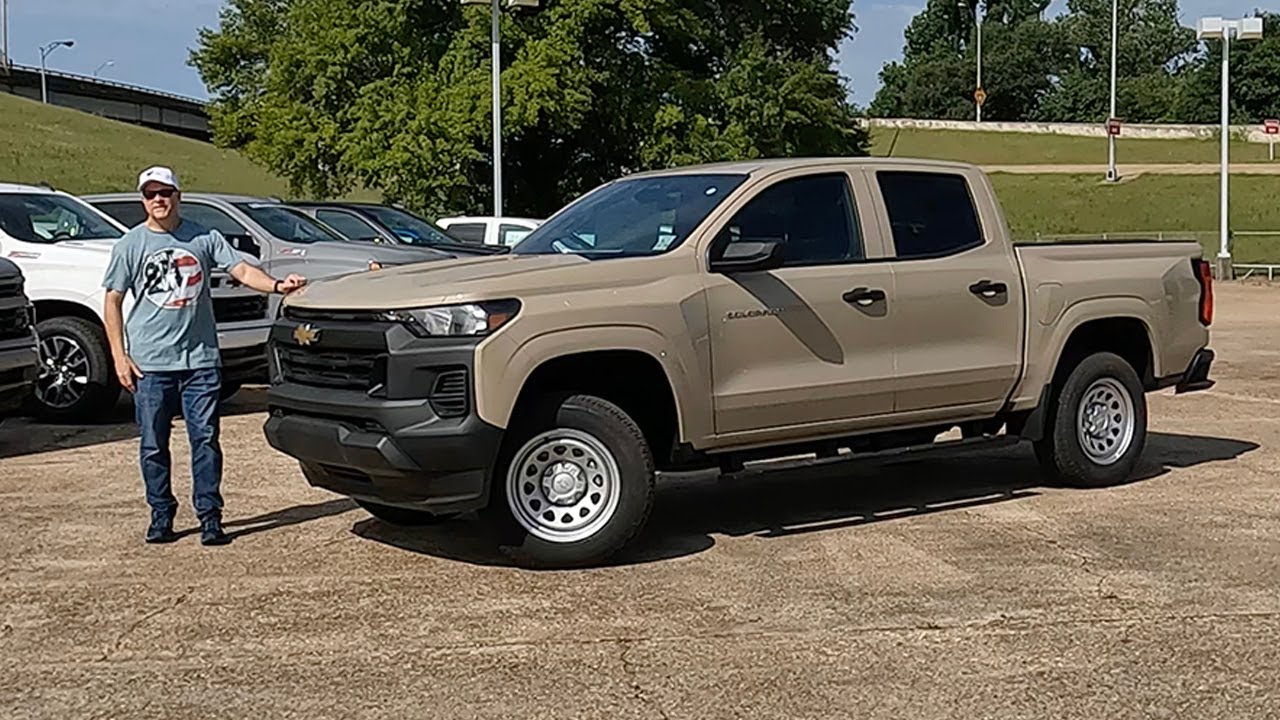
4. Chevrolet Colorado WT
The Chevrolet Colorado WT (Work Truck) base model, particularly in its previous generation, is another example of a truck that falls short when it comes to towing capabilities. Equipped with a 2.5L 4-cylinder engine, it produces a modest 200 horsepower and 191 lb-ft of torque, with a maximum towing capacity of only 3,500 lbs—a number that lags behind its competition in the midsize truck category.
While this is sufficient for lighter loads such as utility trailers or motorcycles, it pales in comparison to the 7,000 lbs or more offered by similarly priced competitors like the Toyota Tacoma or Ford Ranger.
The lack of towing power in the base Colorado WT is partly due to the naturally aspirated engine’s lack of low-end torque, which is a crucial element when towing heavy loads. When attempting to haul large trailers or equipment, the Colorado’s engine struggles to provide the necessary power for smooth acceleration, particularly on uphill grades.
While the six-speed manual transmission in the base model offers more direct control, it’s not enough to make up for the engine’s inability to handle heavier tasks. Additionally, the truck’s rear leaf spring suspension, a more basic system compared to the coil-spring suspensions found in other modern trucks, provides a rougher, less stable towing experience.
Chevrolet’s decision to keep the Colorado’s base engine and suspension setup less powerful and focused on entry-level buyers means that customers who need a more capable towing vehicle will need to look to the V6 or diesel engine options—both of which come with a significant price increase.
While the base Colorado WT is a functional truck for daily work tasks, it doesn’t offer the towing capabilities that many buyers in the midsize truck segment need, forcing them to consider upgrades for serious hauling. The limited towing power in the base trim of the Colorado makes it a less-than-ideal option for those who require a workhorse from the start.

5. GMC Canyon Elevation Standard
The GMC Canyon Elevation Standard (previous generation) suffered from the same limitations as its Chevrolet counterpart, the Colorado. Equipped with a 2.5L 4-cylinder engine, the Canyon offered a relatively weak 200 horsepower and 191 lb-ft of torque, with a towing capacity that topped out at 3,500 lbs—a far cry from the more robust towing abilities of its competitors.
While this towing capacity may be adequate for light-duty tasks, it simply doesn’t measure up to what many truck buyers expect from even a base model in this segment.
The problem with the Canyon’s base towing capacity lies in its underpowered engine and the lack of additional towing-oriented features in the base trim. Although the Canyon shares a similar platform with the Chevrolet Colorado, it lacks the same strong V6 or diesel engine options in the base configuration, making it less capable for customers who require more towing muscle right from the start.
The rear leaf-spring suspension also provides a less stable and less refined towing experience, and like the Colorado, it struggles under heavier loads. This is especially evident when driving with trailers on uneven terrain or steep inclines, where the Canyon’s engine and suspension begin to feel strained.
The base Canyon Elevation Standard might have the appearance of a capable mid-size truck, but its underwhelming towing capacity leaves much to be desired. While GMC offers stronger engine options in higher trims, those looking for a truck with immediate towing power will need to look elsewhere.
The lack of emphasis on towing in the Canyon’s base configuration means that this truck is better suited for light-duty hauling or personal use, rather than as a dedicated workhorse capable of heavy lifting.
Also Read: 5 Cars That Feel Planted At 80 MPH And 5 That Float Or Wobble
In the competitive world of pickup trucks, it’s clear that not every base model is built to perform under pressure. The five base models that excel in towing—whether it’s due to a well-engineered chassis, powerful engines, or thoughtful gear ratios—prove that capability doesn’t have to come with a luxury trim price tag. Trucks like the Ford F-150 XL or Chevrolet Silverado 1500 WT are excellent examples of manufacturers understanding that real utility should start at the foundation.
On the other hand, the five base models that fall short in towing capacity serve as a reminder that appearances can be deceiving. A rugged design or recognizable badge doesn’t guarantee performance. For some manufacturers, the base trim is more about affordability and fuel efficiency than raw power, which may be a good fit for city drivers or those who rarely tow, but it could leave others seriously underwhelmed.
As always, buyers should consider not just the price, but the full scope of their needs: towing capacity, payload, drivetrain, and whether upgrades are possible down the road. The difference between a base model that hauls confidently and one that struggles can mean wasted money, limited utility, and missed opportunities. With proper research, truck shoppers can avoid pitfalls and find a dependable machine that pulls its weight—literally and figuratively.
Choosing a base model truck doesn’t have to mean compromising on capability. With the right knowledge, it’s possible to find a no-frills pickup that’s both affordable and strong enough to handle the toughest jobs.

